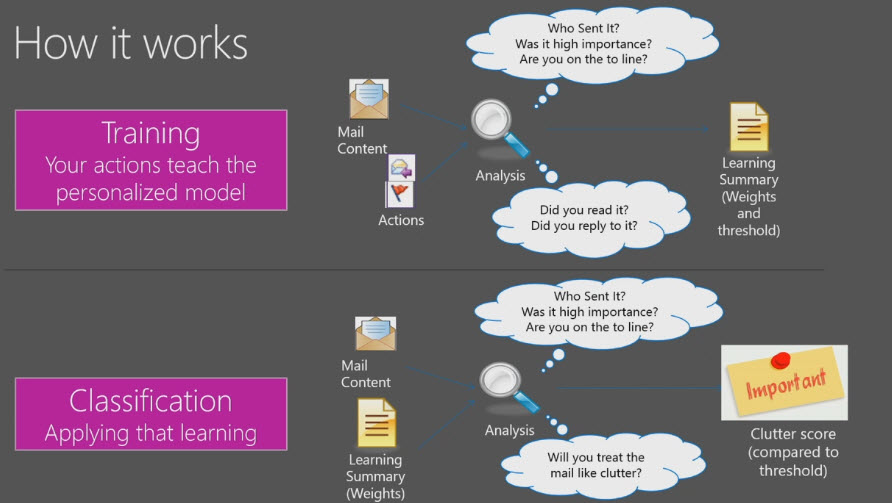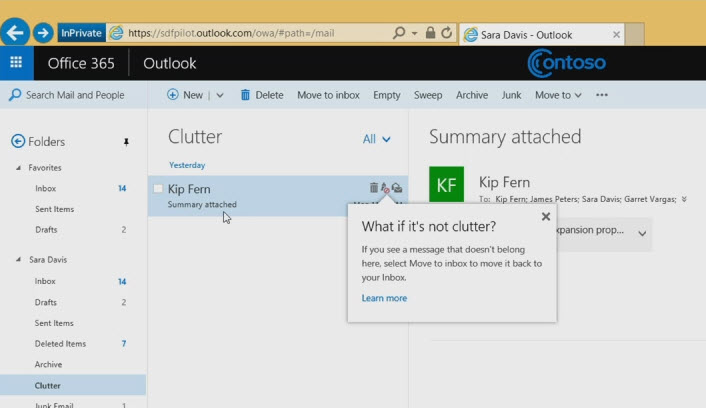How Microsoft wants to make email more effective
Email is still strong when it comes to communicating with others on the Internet, especially in business but also elsewhere.
It has been around for a long time and has not changed all that much in that time especially when it comes to inbox management and how data is handled.
For instance, a typical workflow looks like the following: you get an email with a work file attached to it that you should read, edit and transfer back.
To do that you first need to identify the email in your inbox. Once done, you open the attachment and save it to your local system to open it in a program that supports its file type. You then edit it, save it again to the system, fire up your email client again, hit the reply button, write something and hit send in the end.
Microsoft hopes to improve the first step in the chain, the identification of important emails, with the help of Clutter which it plans to ship with the next version of Outlook but also make available for previous versions of the messaging platform.
Clutter is an algorithm that learns patterns based on the behavior of the user. It learns about emails that you interact with immediately, emails that you tend to ignore and emails that you forward right away to another party.
Microsoft notes that Clutter is ideal for information workers who receive large volumes of emails, and that it will be proactively enabled for users who benefit from it. Controls are provided however to enable or disable the feature on the user system or remotely by administrators.
Clutter works in the following way:

The training phase never stops but Clutter needs some time analyzing how you interact with mail contents so that it can apply what it learned to improve your workflow.
Weights and thresholds are refined as you use email and Microsoft aims at an accuracy level of at least 85% to achieve the best user experience. The company notes that average email users who worked with Clutter managed to save 82 minutes each month working with email while about 10% of users saved 168 minutes instead.
Since Clutter is not restricted to Outlook 2016, it will pick up on user actions in all programs that support it. This means that actions such as moving message to the clutter folder or out of the folder are used as signals.

Rules can be applied in the admin backend. It is for instance possible to set up rules for emails that should bypass Clutter, or set the retention level of emails in the Clutter folder in the backend.
Here is the full video of the Tame your inbox session that acts as an introduction to Clutter.
But identification of important emails is not the only part of the email workflow that Microsoft plans to improve.
Deeper integration with OneDrive, the company's cloud storage service, should improve another important aspect: file attachments and modifications.
The main idea, outlined in Re-thinking Attachments wants to improve the workflow by combining OneNote and editing capabilities with email.
So, instead of having to save attachments to the local system to edit them, they can just be clicked on to process them in an appropriate program, for instance directly on OneDrive or using Office365.
While that won't take care of all email attachments, as you may communicate with users who use different clients, it should improve the workflow in businesses that rely on Microsoft's ecosystem.
This article was first seen on ComTek's "TekBits" Technology News

- Log in to post comments